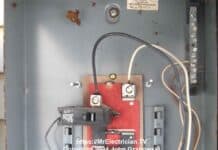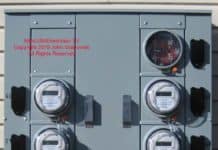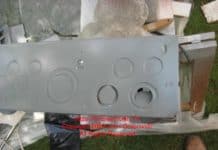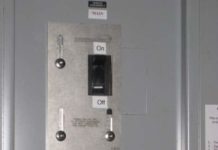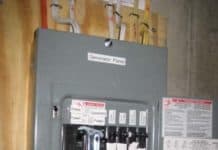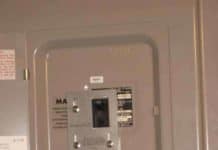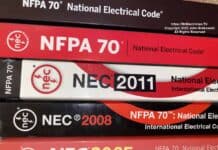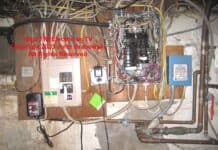You are on Page 3. Click for Page 2
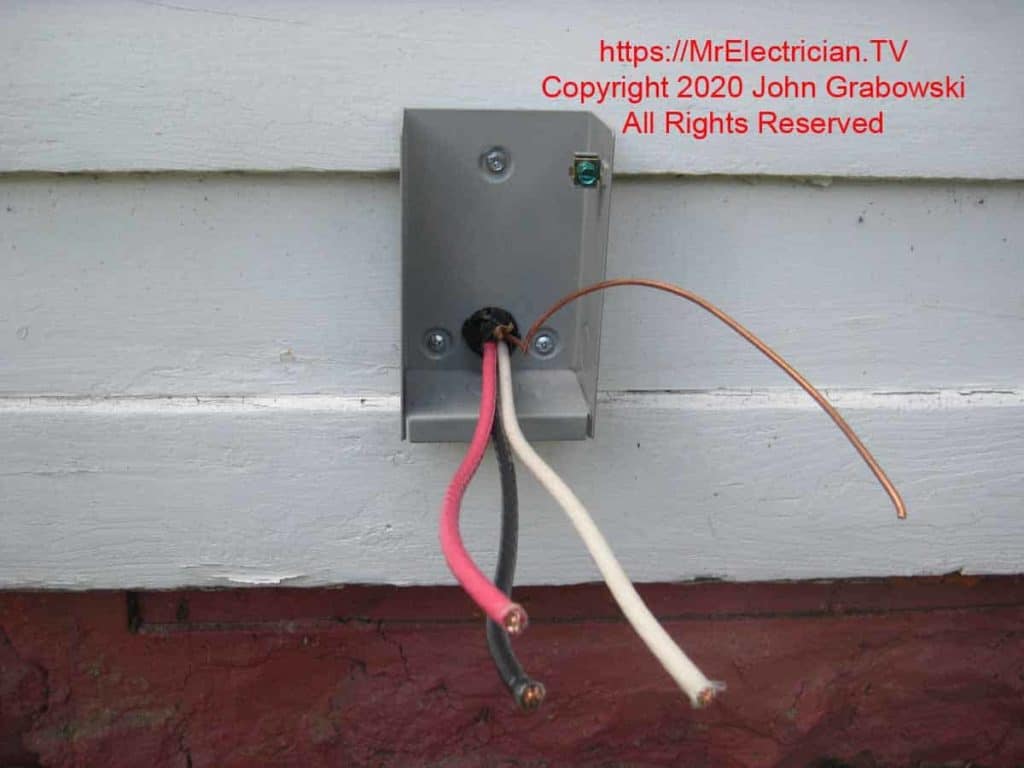
A 3/4″ plastic button-type Romex connector secured the cable to the back of the Reliance PB50 generator inlet box.
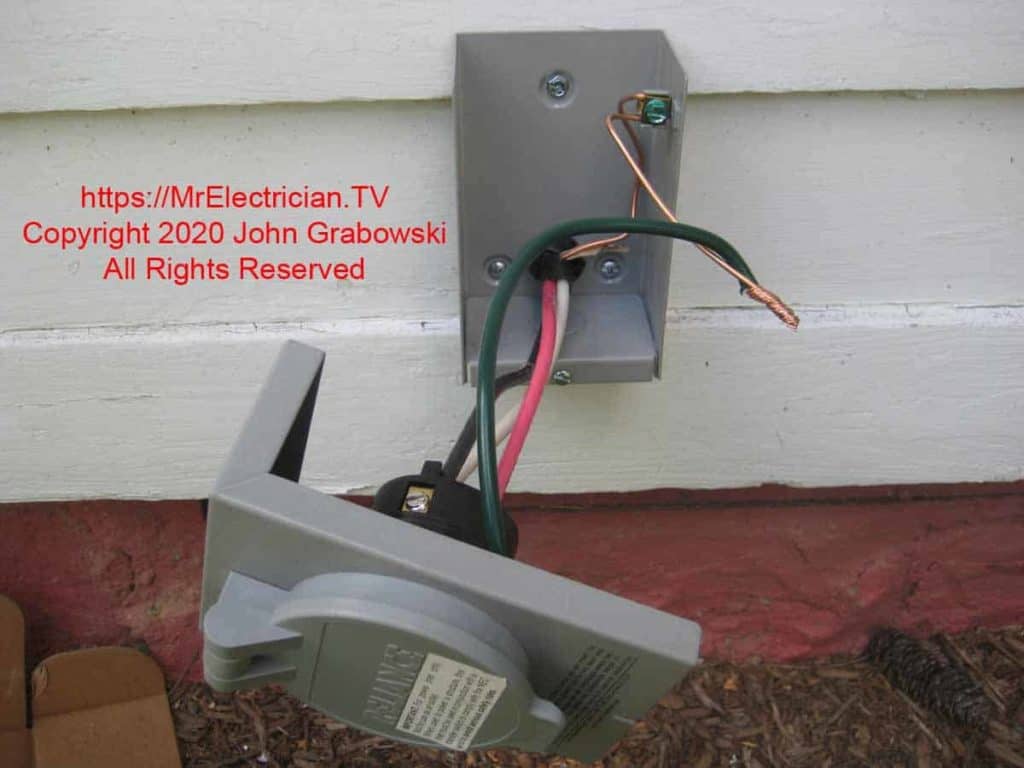
As shown above, I always twist the wires tightly together with my Klein lineman pliers before I screw on a wire connector.
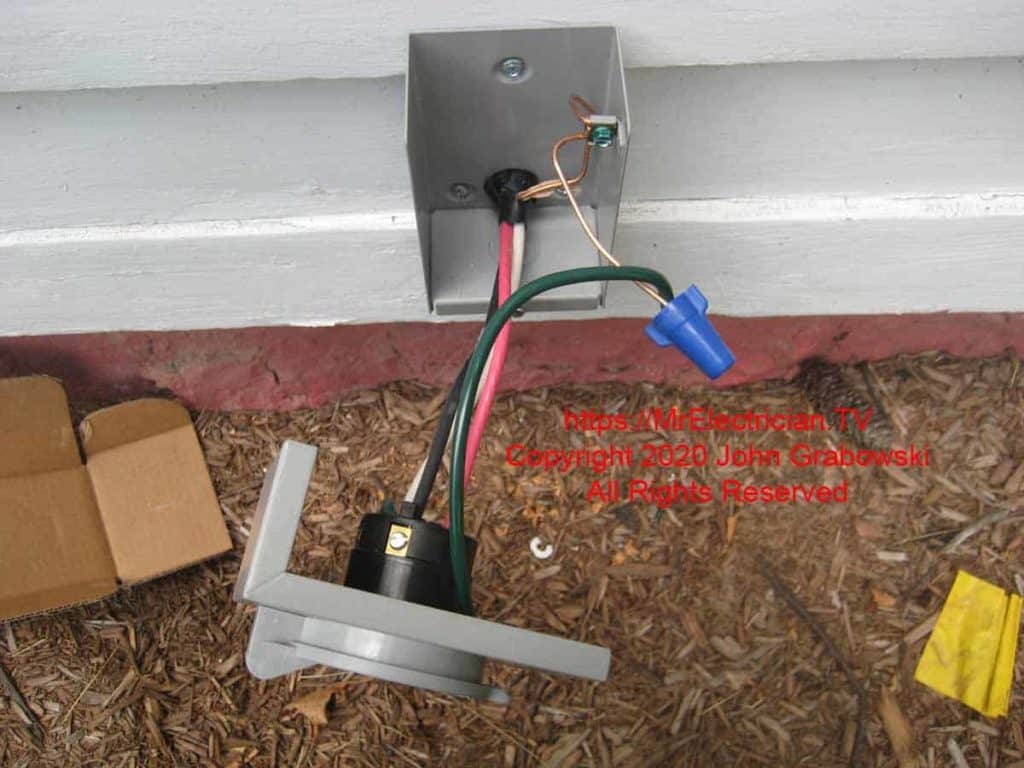
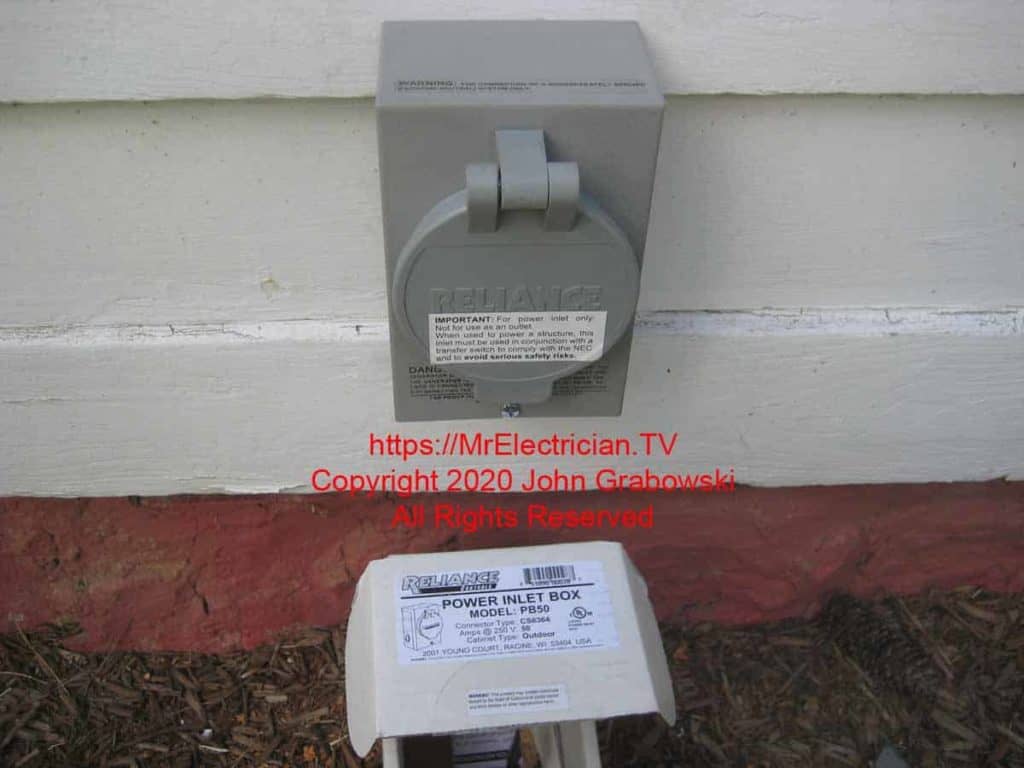
After I took the pictures of the inlet box, I put a bead of caulk across the top of the back edge where it comes in contact with the house siding. This is to prevent water from getting behind. I always use an outdoor clear gutter/flashing caulk that lasts the longest.
Caulk can be a little messy to work with, which is why I took the pictures beforehand. I did not want to get caulk on my camera or phone.
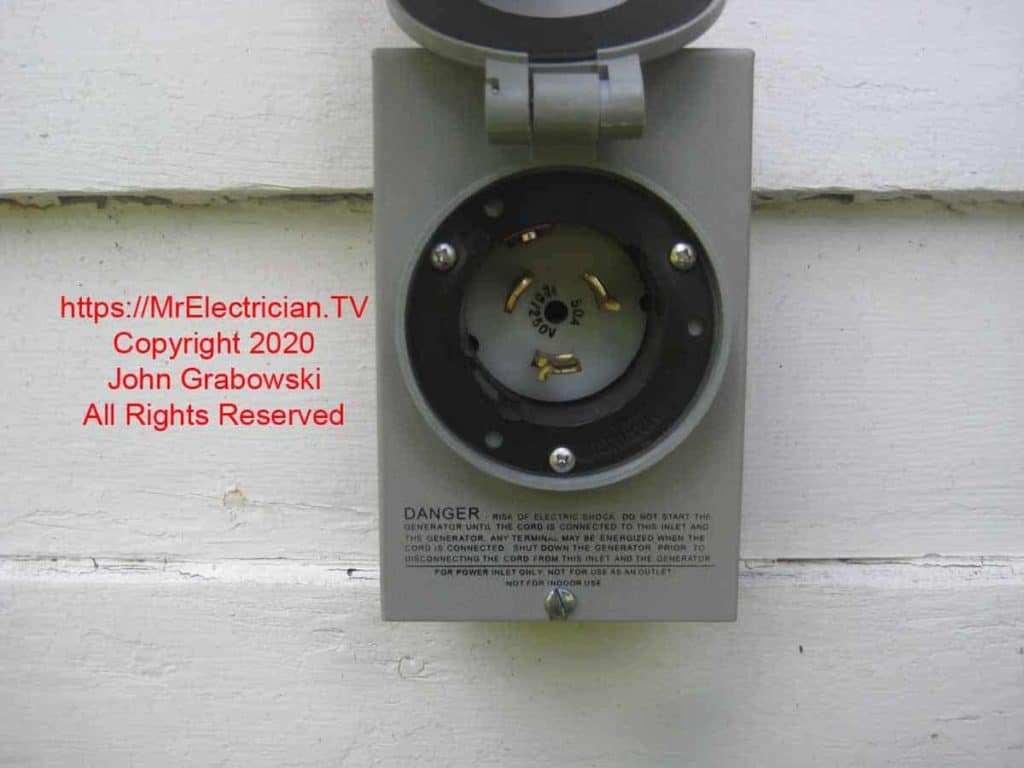
I wired this for 50 amps, but the client did not have a generator big enough yet (12,000 watts) for that kind of power. So I made them a 50 amp female (CS6364) to 30 amp male (L14-30p) short adapter cord so they could at least use their 6000-watt generator until a larger one was purchased.
The ground continuity is established through the center pin on the 50 amp plug and receptacle, which differs from smaller twist lock plugs and receptacles with a fourth twist prong.
Top Of This Page
INTERLOCK KIT
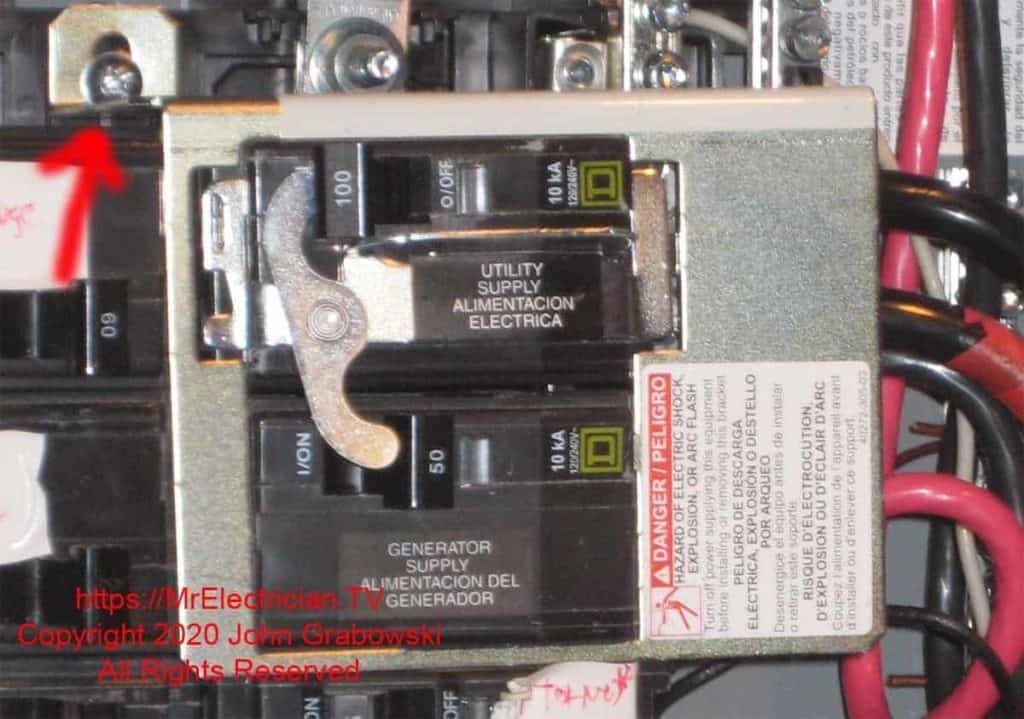
The close photo above depicts the Square D #PK4DTIM4LA Manual Transfer Equipment Kit circuit breaker interlock with the retainer to keep the circuit breakers in place. It was straightforward to install. Installation instructions are included with the kit. The red arrow indicates where the retainer was screwed to keep it in place.
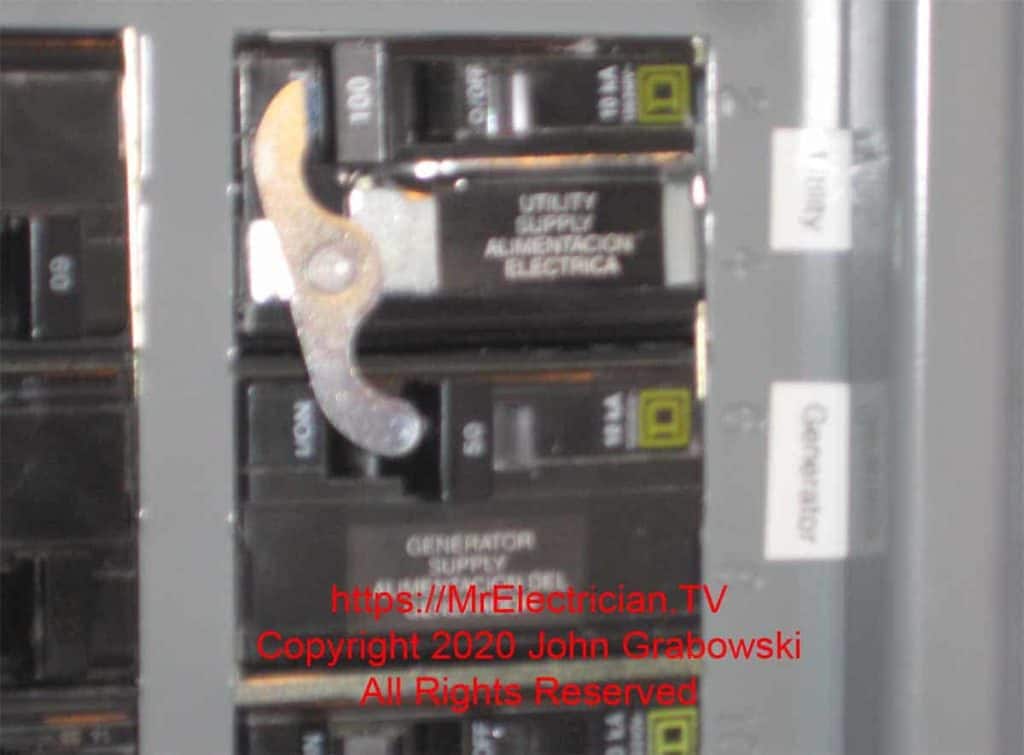
To pass inspection, it is necessary to use equipment and accessories approved by Underwriters Laboratories (UL) or another recognized testing laboratory. The interlock kit and load center manufactured by Square D are fully approved. This wired generator sub-panel job passed inspection.
INTERNAL BONDING
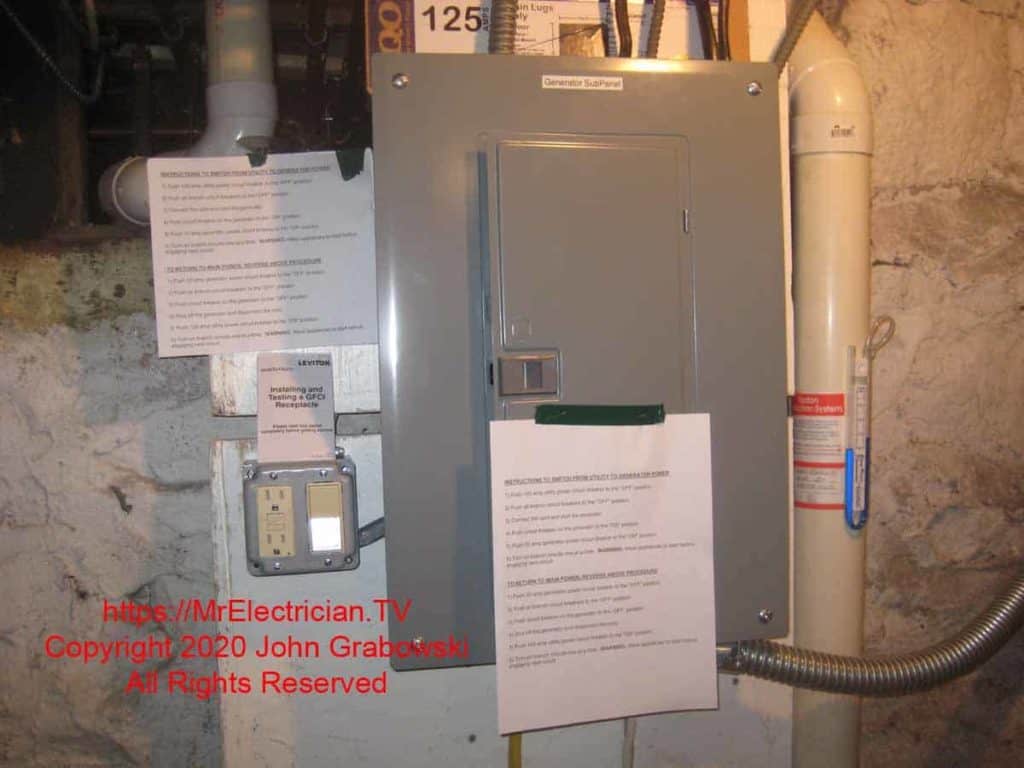
It’s important to note that this type of portable generator hook-up can only use a portable generator that is NOT BONDED INTERNALLY. This means that the neutral and the ground are not connected. They are already attached to the house’s main electrical panel, as Article 250.92 in the National Electrical Code requires.
Connecting the neutral and ground in the generator can cause problems, particularly with GFCI circuit breakers. When purchasing a portable generator, look carefully at the packaging or contact the manufacturer before purchasing to determine if the generator is bonded internally.
An internally bonded portable generator will only be used where it is not connected to household or building wiring, such as a construction site or camping.
To use your entire main electrical panel for generator power, an interlock kit installation may be a good choice. See an example of an interlock kit I installed on an older Cutler Hammer load center.
Not all the materials shown in the above installation will be available at a home center or hardware store. You must go to an electrical supply company where contractors shop to get some parts.
To help keep this website FREE, please use this Amazon link for your purchases. As an Amazon Associate, I earn from qualifying purchases.
Click for a FREE copy of my book “Almost Everything You Need To Know To Repair a Bathroom Exhaust Fan In Your Home.”
Get your required “Emergency Disconnect, Service Disconnect” labels and stickers to satisfy the 2023 National Electrical Code requirements in article 230.85(E)(1) and (2) by going to my Redbubble Shop here.
Visit my Link Tree home page for my social media connections and other links.
